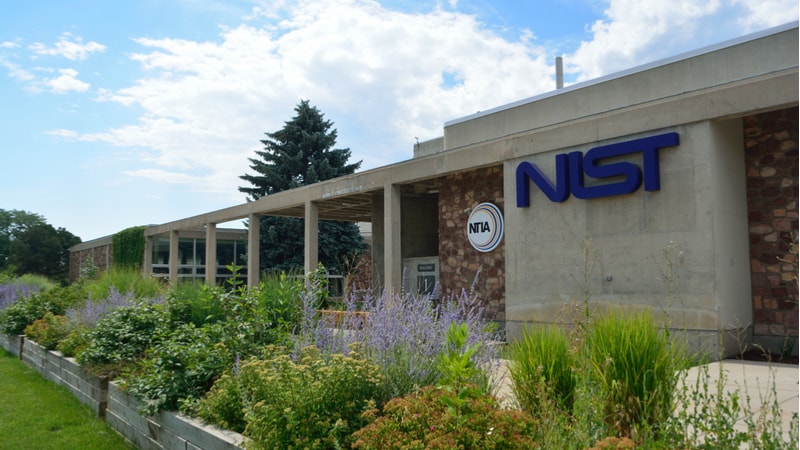
The National Institute of Standards and Technology (NIST) implemented a new digital human resources (HR) platform. The system automates workflow for recruiting, keeping HR team members focused on high-value activities.
The result is a faster, smarter hiring process, explained Jasmine Ventura, NIST’s Supervisory HR Specialist, and Laurie Filer, NIST’s HR Specialist, at the ServiceNow Knowledge 2019 conference.
Several years ago, a task force examined administration operations across the organization. NIST pinpointed areas for improvement, including speeding up recruiting.
Their goals included creating a single point of entry for candidates. NIST also wanted to improve the consistency of HR communication. Other recommendations included adding self-service opportunities to check requests and giving HR leaders more access to actionable data.
“When we went live [with the new system] we had between 12 and 16 specialists. So for you to receive inconsistent information – it definitely could happen,” said Ventura. NIST needed a solution to automate and track workflows. IT also needed better visibility into total workload and trends.
NIST’s HR team selected ServiceNow in 2015. The first priority – recruitment, which was “huge and complex,” said Ventura. But, for NIST, it was the right starting point.
NIST used the ServiceNow platform to create a custom HR recruitment application, HR STAT. STAT stands for submission, tracking, and analytics tool.
“The application allows internal customers to submit an electronic request, track the request from beginning to end, and receive consistent notifications for the entire process,” said Ventura, “All while receiving recruitment reports and analytics along the way.”
Ventura and her team launched a pilot program in March 2016 and focused on competitive hiring at three component organizations. The pilot provided experience with the platform and feedback from all stakeholders.
NIST launched the agency-wide application for competitive hires in November 2016.
Ventura and her team solicited more feedback. They released a new version in January 2018 for competitive and noncompetitive hiring. HR STAT now integrated with other systems including security and the position classification system.
“We didn’t do this overnight. We started with something really big, we broke it down into manageable chunks, and we just went for it, and it went well for us,” said Ventura.
The updated processes and new application give the HR team new visibility. During a demo, Filer showed how managers can track status.
“We actually have over 100 [notifications] that fire throughout every milestone in the process. One of our goals was to increase the consistency and effectiveness of our communications with our customers. So having these notifications that are firing on a consistent basis with standardized information definitely helped us to achieve that goal,” said Filer.
The system automates two forms, a significant time saver and improvement. HR STAT takes data in the system and fills out Standard Form 52. The previous paper-based process required three signatures and much more time.
The application also now goes through a similar process to create the CD-516 form. CD-516 is a classification and performance management record. This process replaces a manual effort and reduces tedious work for HR specialists.
“Automating these two forms has been one of the biggest successes of the HR STAT application. This used to be a complete paper process, so we’re really happy with these results,” said Filer.
At the enterprise level, the application feeds data into dashboards. NIST can see data errors and provide training to address those areas in real-time.
“That staffing supervisor can click in there and see what’s happening and fix it before they see it a quarter later when they can do nothing about that data. Gone are the days of coulda, shoulda, woulda – we can actually fix an action that’s taking too long in real-time. Every field in our application is actionable,” said Ventura.
The HR STAT application is helping NIST’s HR team to exceed their goals.
Ventura explained that the Federal HR hiring process establishes a 65-day target. The timeframe starts the day a recruitment package is complete and ends with the offer. Many steps take place during that time.
“The 65-day target – our amazing, talented HR specialists were exceeding the target,” says Ventura. “They were at 63 days. But, when we gave that amazing group of people an efficient, effective, transparent, consistent tool, they were able to hire the same amount of people – 150 people – in 43.5 days, which was a 24 percent decrease in our end-to-end hiring time.”
Managers now have visibility into candidate status. They can see the full HR workload and have data about each step in the process.
“Our pilot program was recognized with the NIST Director’s Award for Excellence in Administration,” noted Ventura. “They did give us accolades for faster hiring, and recognize the dedicated partnerships that it took. But what they recognized that resonated the most with me was that our pilot served as a model for other service organizations across NIST.”
Ventura encourages other organizations to jump in. “Our top takeaways – I’d say ‘go big.’ It worked for us to jump in there. When you do go big, just pilot those new applications,” said Ventura.
Ventura also emphasized the importance of partnerships with other organizations in the agency. The partners included IT and NIST HR customers. There were many groups: administrative staff; security specialists; assistants; staff doing reciprocity checks, background, and clearances; and the HR team specialists and assistants.
“We brought a small group of subject matter experts from each of our key partnerships [with us throughout the roadmap], and they had an equal say in what we were developing, designing, and testing,” said Ventura.
Alongside HR STAT’s success, other groups are working on modernization projects. Ventura says IT was already using the ServiceNow platform. Others are in the works – Finance, Agreements, Acquisitions, Facilities.
HR will continue to modernize and improve services – automating, streamlining workflows, and helping team members focus time and talent on the things that matter most.
